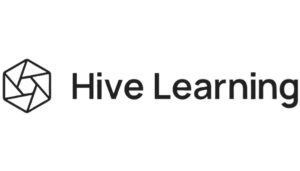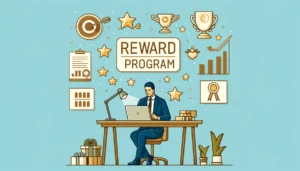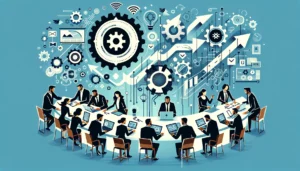HRD Roundtable Report: Future-proofing Talent Strategies for Engagement, Retention and Growth
- 11 Min Read
The following report captures some of the valuable discussion and ideas generated during a recent virtual roundtable between senior HR and talent leaders, led by Gary Cookson, Founder and CEO, EpicHR, and joined by Teri Atif, Divisional Head, Access People. It was conducted under Chatham House Rules to encourage an open sharing of experiences, and […]
- Event Types
- Date of Event: Dec 2, 2021


The following report captures some of the valuable discussion and ideas generated during a recent virtual roundtable between senior HR and talent leaders, led by Gary Cookson, Founder and CEO, EpicHR, and joined by Teri Atif, Divisional Head, Access People. It was conducted under Chatham House Rules to encourage an open sharing of experiences, and so no names or organisations will be included.
Forward-thinking organisations are grappling with the challenge of establishing the routines and approaches to work and working life that are needed for the volatile, uncertain, complex, and ambiguous (VUCA) landscape.
Do the models we currently use still create efficient workplaces with the changing capabilities we need? Do they meet the requirements and expectations of the top tier talent that we want to attract, retain and grow?
We can’t predict the next big thing that will affect the workplace but we can create strategies to reduce the impact of uncertainty through talent strategies that can flex with change.
A note from the moderator, Gary Cookson:
Several key themes emerged from the discussion for me, the first being the Great Resignation. People are feeling a level of discontent and burnout and are more aware of what they want from life as well as work. We’re also seeing the impact of demographic change, contributed to by issues like Brexit and Covid.In the short term, we need to focus on redefining our employee value propositions and who we deem as competitors. Individual circumstances are more and more important, and we need to re-engage at that level.
We also need to rethink and rebuild the structure for work, whatever that may be, to allow for better flow and engagement during that flow. Job crafting may need to change – do we need to look at things task y task, rather than job by job?
Looking forward however is a bit more difficult. Whether this is a one-off period, or a sign of an ongoing change is unclear. HR will need to redefine itself to meet this challenge of uncertainty.
What are the greatest challenges in talent? Are we seeing the effects of the Great Resignation?
Previously, a lot of movement in the talent market was a sign of a healthy economy as people moved up the career ladder. However the surge feels more driven by disconnection and uncertainty. UK job vacancies have hit more than 1 million for the first time since pre-pandemic. People are re-evaluating what they want from work and life, and many are finding that they need to make different choices. The senior HR and Talent leaders participating in the roundtable all noted that they’ve seen a lot of flux in their organisations, across various industries.
Employee experience and expectation came up again and again. One participant noted that a major change of direction – the collapse of an acquisition and a sale – has caused a lot of concern and anxiety around further changes, as well as frustration over disruption that ended up being unnecessary. How do we engage and retain people through these kinds of negative experiences? The group also discussed challenges around being a competitive employer for key skills and talent. The best digital talent for example has their pick of roles, and many less organisations simply can’t compete with the offerings and benefits of working at a large tech employer.
Inclusion as a hiring driver may also be having a knock-on effect at a senior/exec level, where there are currently fewer diverse candidates. More and more organisations are making a point to prioritise diverse candidate pools and hiring processes, which is great for creating more opportunities and driving DE&I outcomes but may be creating a scarcity. One group member noted for example that they have recently lost quite a few of their senior women to other organisations that have been focussed on hiring more women to their exec teams. This has dropped their own diversity levels while they look for replacements. The number of diverse candidates at senior levels is still catching up with demand, as organisations correct the barriers to promotion.
There are noticeable patterns across other demographics. The lack of HGV drivers for example could be seen as a demographic ‘time bomb’ with many drivers being older men. Have we simply lost them to an early retirement after a very stressful few years? Brexit has also had an impact. European employees feel less valued and welcomed by the UK, and in very literal and practical ways are finding it more difficult to stay and work. This is particularly noticeable in hospitality and retail, in roles that are often filled by more casual or transitionary workers.
How can we change our approach to retention?
We’ve moved into a space that requires us to move very quickly. Joining bonuses, probation passing bonuses etc are becoming more commonplace and increasingly generous. These are short term fixes though – there will always be someone with more resources and bigger pockets. What do we need to do to get a real hold of what is going on and review our employee value propositions?
Organisations need to really break down who they want to attract, how and who they’re competing against. One participant shared that they have invested in a much larger recruitment team tasked with outreach and meeting people where they are, specifically their younger Gen Z candidates. Where are the untapped pools in the landscape? What kind of characteristics do you need and what can we do to broaden that to different profiles? They are also focussing in on the first 12 weeks of experience in the roles – what is the learning programme like, is it accessible, have they created an experience where people will want to stay long term?
If we’re saying that people are moving because of changed priorities, have we done the work to understand these shifts? For example, initially the lack of commute from working from home was a bonus. Now however it’s been so long that it feels like a norm and expecting people to commute again feels like taking something away, rather than a return to normality. Is our biggest competitor now just the nearest good organisation to where the employee lives?
We need to better understand the challenges people are facing in and outside of work to better understand their goals, pains and needs. Focussing on listening, with surveys and focus groups is a good way to open the conversation to start redesigning the employee experience. Let’s not create a one size fits all solution but reshape work for individuals.
Can we flip the narrative? Is losing people that have changed their minds about what they want from their jobs truly a bad thing? Surely, we don’t want people that genuinely don’t want to be here! If we accept that sometimes the environments of our organisations aren’t for everyone, can we build better messaging to attract those that it will suit?
How can we build connections in this changing environment?
One element that has been lost is the ‘watercooler moments’ – the random interactions that build connections. Now communication is very task focussed, without the fun or non-project related conversation. When did you last have a conversation with someone you weren’t directly working on a project with? Perhaps this is something we now romanticise but how do we bring the watercooler to the masses?
One participant shared how they have introduced livestreams from the CEO – delivered on a regular basis, they provide an informal ‘check-in’ from the top that can be more personable than an official company update. They hope to cascade this down to other leadership levels to encourage closer connections between managers and their teams.
Is there more we can do to bring the outside in and think of employees as consumers? Can solutions to external problems be reshaped to solve internal challenges? Ideas like a social intranet – what can we take from Facebook, Instagram, Twitter, where people love sharing their experiences and ideas?
Finding ways to incorporate these connections into the flow of work is central to making them authentic, rather than a burden on already full days. One solution is making sure to share only what feels most relevant and important to the employees. Less about the bottom line and performance, and more about ‘this is why you can be proud to work here’, ‘this is the support available to you’, ‘these are our plans that will affect you.’
In these conversations we often forget the workforce that don’t have computer access throughout the day. How do we reach them? One idea from a participant with a high proportion of logistics employees shared success with communicating via podcasts. Like the livestreams mentioned before, these are designed to be short, informal and deliver only the most useful information. Drivers can listen while out on a job and on-demand and feel connected to what’s happening in the wider business.
Reshaping work
The nature of work has changed fundamentally, in terms of where, how, and what we do. There is a requirement now to redesign our idea of work and how it flows in order to continue to be productive and engaged.
What can we do to support the flow of work in the day to day?
Allowing individuals to set their own rhythm for work within a guiding structure can be a place to start. One participant shared their organisation’s approach via asking employees to set targets for the kinds of work their role requires. They then focus on giving employees the tools to achieve this for themselves – sharing best practice, technology tools, etiquette for arranging meetings – as well as the freedom to change their working hours as long as they continue to meet their targets.
Another common pain point is around the influx of meetings that have arisen in the hybrid working environment. These disrupt the flow as people swing from meeting to meeting, without time to do individual work or even digest the content of the previous meeting. To combat this, one participant shared their adoption of the Pomodoro Technique to better support their teams to manage their time in a productive way. This breaks the workday into 25-minute chunks, with 5- or 10-minute breaks to rest their minds. The whole team has been encouraged to adopt this method, including when scheduling meetings to give time to reset and refocus.
How do we make space for additional development outside of the core tasks of a job, i.e. learning and development? Across the board in our consumer lives, content is personalised, on-demand and easily consumable. Younger people joining the workforce tend to be more digitally savvy, but also used to a certain level of experience from their tech. What does this mean for how we deliver training and development? Micro-learning, on the job learning, peer to peer learning are increasingly popular alternatives to formal development programmes. They fit more smoothly into the established flow, without taking too much time out of your day.
All this leads into the need to update how we create roles and job descriptions as whole. The roundtable group discussed better job crafting as a strong opportunity to evaluate what the business needs and how individuals best contribute. Current job descriptions don’t tell us much about how tasks are best accomplished. Perhaps some require collaborative work – and so we’re looking for people that are keen to spend time in the workplace and with colleagues. Some tasks perhaps need deep focus work and would actually be best done by someone who enjoys working individually. Is there room for these tasks to be done at home or on a flexible schedule? Should these different tasks still sit under the same role, or do we need to reconsider?
Closing thoughts
As the market continues to evolve, and HR needs to be at the fore. This roundtable had some great examples of how HR can be more nimble in its approach, finding opportunity and creating innovative solution. Could this be the next step to incorporate into our agile thinking – taking small, deliberate action to make quick impact? Truly knowing your business and your people – the core needs and changing competitor landscape, as well as the flows and rhythms of day-to-day work – will be a massive competitive advantage.
For more information on Access Group, please click here.








